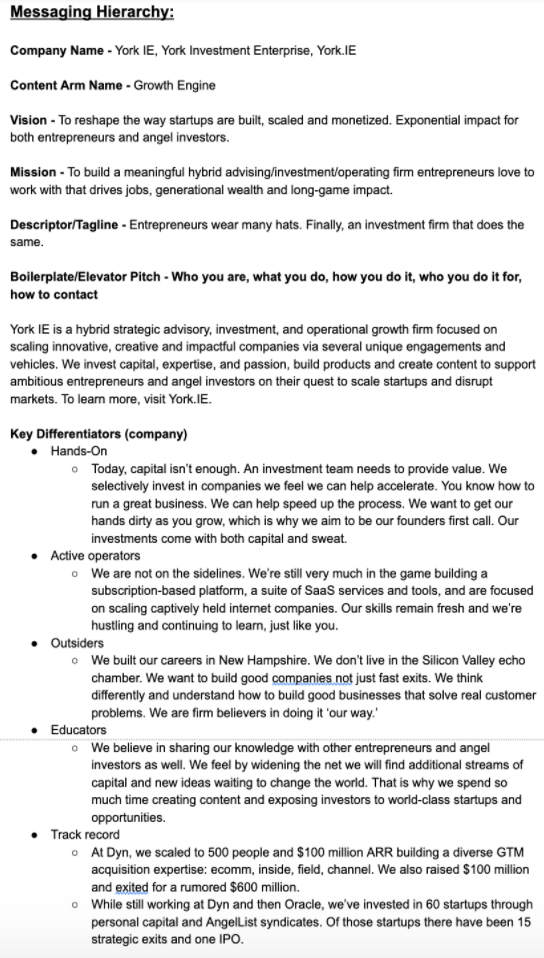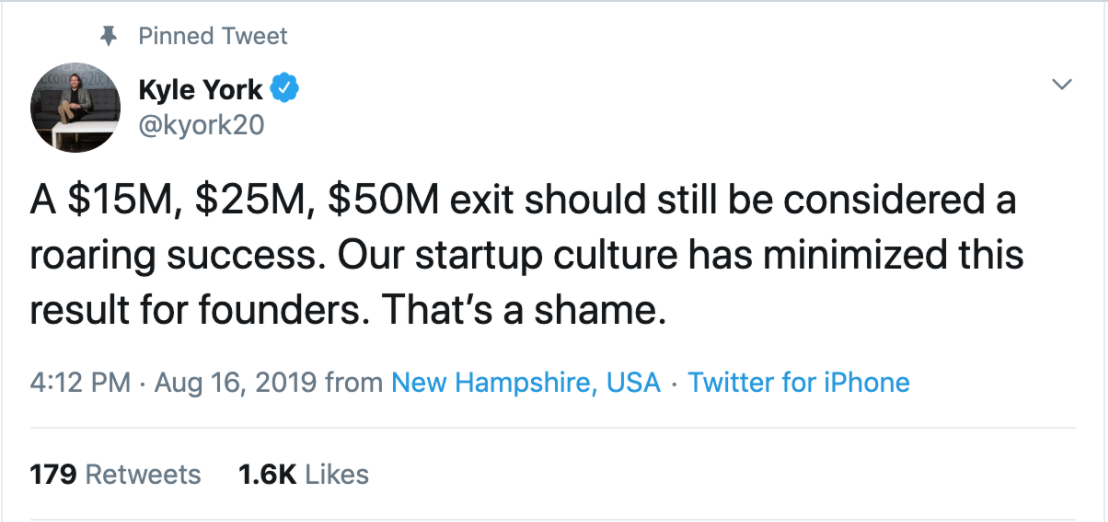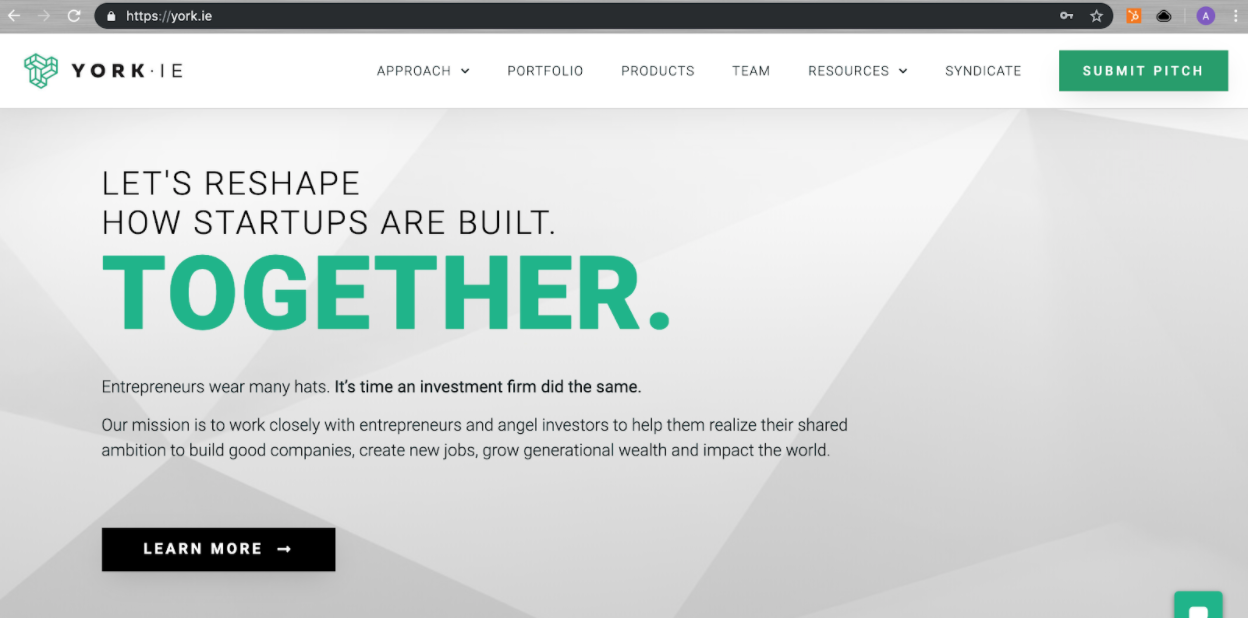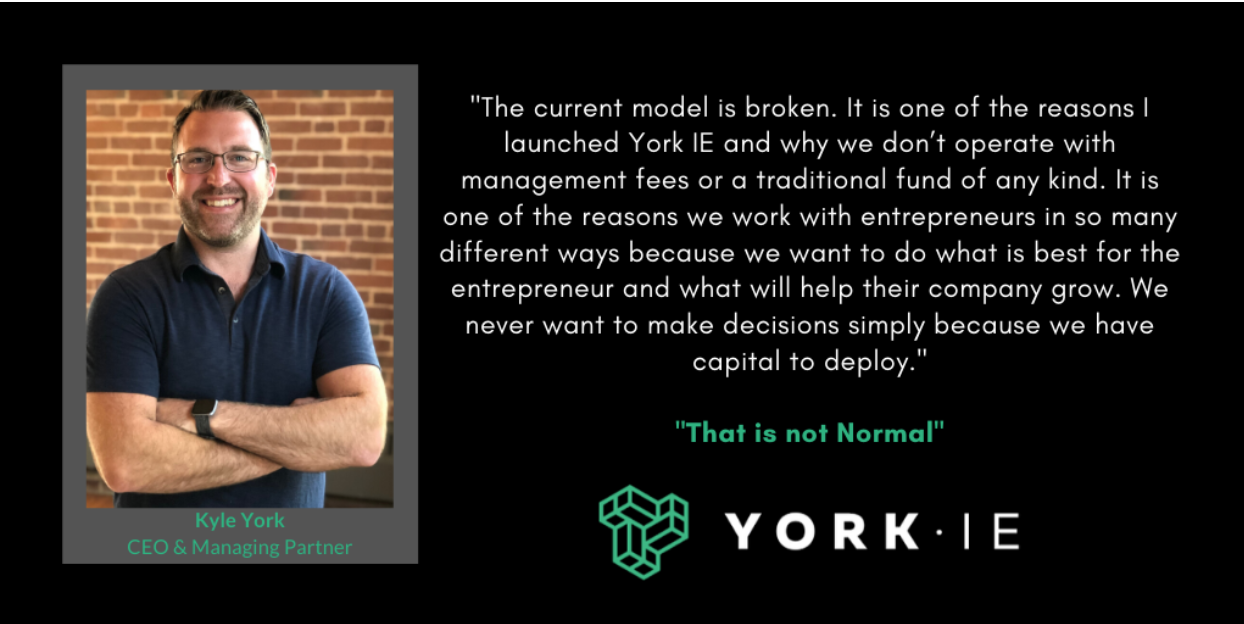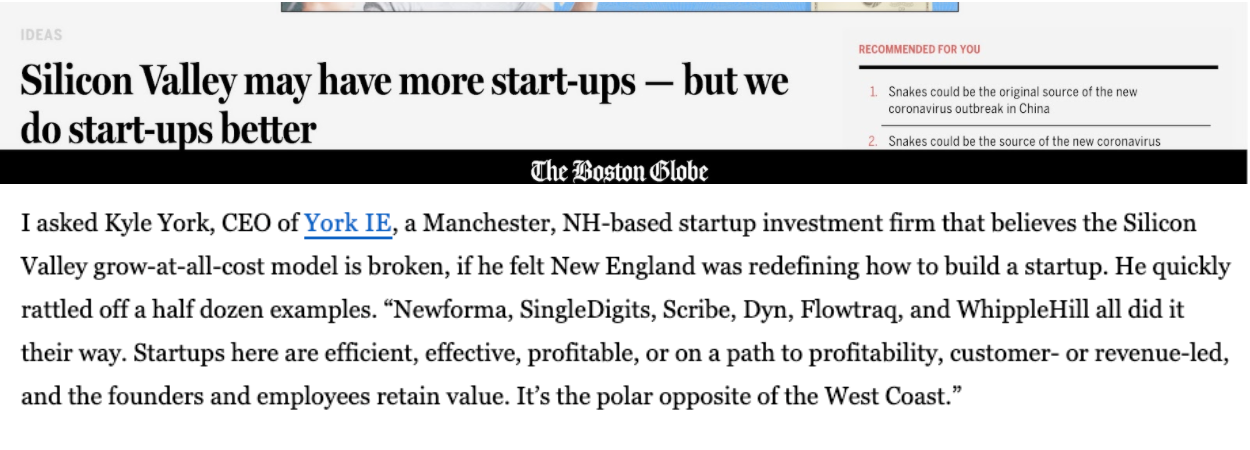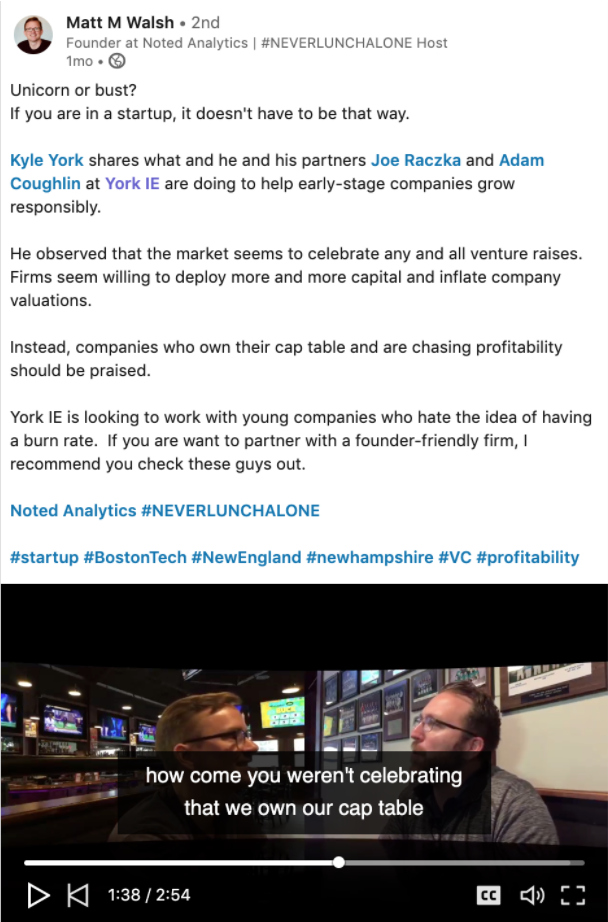Drumbeat marketing is a go-to-market approach that emphasizes strong messaging, discipline, and consistency. It is an effective marketing practice for startups, particularly business-to-business (B2B) startups, as it is designed for companies that have little brand equity and limited resources.
Practitioners of drumbeat marketing understand there is no silver bullet to cut through the noise and have your company be heard. The only way your messaging will resonate is to simplify and own a point of view (POV) that is unique to your startup. Drumbeat marketing focuses on developing a strong POV and then sharing that POV through multiple owned and earned channels over and over again until that POV becomes associated with the startup in the market.
Marketing cannot be siloed, especially when using outside agencies. This leads to wasted capital as well as disjointed messaging. Drumbeat marketing is the antithesis of that approach. Simply put, drumbeat marketing = content marketing + social + public relations + SEO.
Common Problem
B2B startups usually begin by identifying a problem in the market. The best startups then find a few customers and help them solve that problem. If they are successful in doing that, this helps them prove out the concept and attract some sort of angel or seed investment. Once they have that additional capital, however, things get more difficult. When you go from solving a problem for a handful of companies to trying to scale that to a larger audience, you need the help of a brand.
Why?
Importance of Brand
My partner Joe Raczka is a finance guy. He will be the first to admit that he always thought what I did on the marketing side was fluff. But over the past year I have converted him to the power of storytelling. Having spoken to literally thousands of startups, he’s come to the realization that customers expect the tech to work and to solve a problem. This is why the above scenario is common. There is a lot of dry powder out there and many startups are raising seed rounds. The primary way startups emerge from the seed-funded cluster is by becoming a company that other companies want to work with. There is something beyond the tech that they are attracted to. Done correctly that “something beyond” is packaged into a brand.
To have a successful brand you need two things:
- a brand
- an audience that believes it.
Without both, you’re incomplete. Gaining both, however, takes a lot of work.
I’ll talk more later about what it takes to build a brand but let me first discuss an audience. Having an audience is critical for any startup (my colleague, Mike Veilleux, is a huge proponent of minimum viable audience). It can be difficult, however, to grow. Most startups do not have a large built-in audience. For them having a strong brand is like a tree that falls in the forest with no one around: does it make a sound?
If you don’t have an audience, the natural thing to do is to try to tap into an existing one. This is why the entire media and influencer relations industries exist. Media companies have an audience. Get them to cover you and you will expose yourself to that audience and hopefully a portion of them begin to follow you. The difficulty for most startups is that they don’t have enough proof points to merit the coverage of those media outlets. So their efforts are often wasted and frustration kicks in.
So what do you do?
Unfortunately, most companies don’t do anything. They abandon brand building and say they’ll recommit at some future date, perhaps after the next round of funding when they have more resources to throw at the problem.
This is a colossal mistake. First, because more money doesn’t solve all problems. Buying expensive windows isn’t helpful when your house has no foundation.
More importantly, it takes a long time to build an authentic brand. The sooner you can start, the better. Having grown up in New Hampshire I know my perspective has been influenced by our First In The Nation Primary. I once interviewed presidential candidate Jon Huntsman. He told me you need to shake a person’s hand 10 times before they’ll consider voting for you. And then another 10 before they actually will (and sometimes even that doesn’t work since he is not President Huntsman). The same is true of your startup. Authenticity can’t be hacked. It needs to be earned. So you might as well get started. If you wait until you think it is time to shine the spotlight on your brand, then you have waited too long.
So where to begin.
Drumbeat Marketing Course
Watch the drumbeat marketing video on York IE Fuel.
Start with Messaging
You must start by making a choice. The hardest choice a startup must make is deciding what it is not. Startups often don’t know exactly what they are and so they try to be everything to everyone. But this is counter productive for defining a brand. Because when you try to be everything, you end up being known for nothing. I have been guilty of this myself. As an avid reader of the news, you see hot conversations happening all of the time. It is logical to think if you dive in with an opinion, you may get noticed. In theory that’s a good strategy if you can maintain your messaging discipline. More often than not, however, it ends up being the “chasing the shiny object syndrome.” Your messaging ends up being a strewn tapestry of unrelated ideas and quickly irrelevant.
This is why you need to make a choice. It is also why that choice needs to be informed. Many startups know their technology cold and understand the problems they’re solving. But they fail to take a market-in approach. If you don’t understand the broader market/industry ecosystem and the role you play in it, you won’t be able to identify your true moat- your authentic differentiators and the things you should be doubling down on in your brand. When it comes to your market, you must be the most prepared person in any room.
That market-in approach also helps ensure that you speak in the language of the industry and that you’re not just going to market with your own internal vernacular. Again, I have fallen victim to this. I have hammered messaging that made sense to no one outside the walls of my company and then I was shocked when it didn’t resonate. There is a reason that only roughly 15% of Americans are bilingual. It is very difficult to get someone to adopt a new language. It’s much more likely that you will reach them if you’re speaking in their native tongue.
This is why I can’t put enough emphasis on the importance of the messaging hierarchy. Starting with messaging will prevent you from just following the latest buzzword. It will ensure you know what you are and have defined what you want to say before you get distracted by the latest fad.
Please find below a sample of the messaging hierarchy we did prior to launching York IE.
It is a seemingly simple exercise but it is one that most startups at best rush or at worse ignore entirely. There is importance in writing words down. The simple act of writing forces you to commit. When you put it on paper (and I actually like to use pen and paper), it becomes real. It also gets thoughts out of the founders’ head. Only when multiple people can see, read and react to one document that can you actually scale. Again, this may seem obvious but it is crucial.
First, it allows you to test against assumptions. In startups, the core team is often too close to the material. They are living and breathing it. It’s all they speak about. By having it written down, you can have unbiased, objective outsiders review. This can get real (and even painful) because you may not always like what they have to say. But it is much better to hear this sooner than later and better from a friendly voice than a prospect. It gives you feedback that you haven’t had a chance to think about from a different perspective.
Secondly, what writing things down also does is it gives you access to the power of unified voices. I always like to do an exercise where I independently talk to different members of a startup leadership team. I start by asking a simple question: what does your company do? It is always shocking how many different narratives I get back. Let’s be honest: if you don’t understand what your company does, how can you expect anyone else to?
This why the power of unified voices is important for brand:
- Credibility- If you talk to multiple people at a startup and they all echo the same key messages, you have confidence that they have their shit together. Never underestimate the power of confidence in a startup – both externally and internally.
- Amplification – Every touch point that someone has with your startup is an opportunity. It is either a good opportunity (brand equity gained) or a negative one (brand equity lost). By negative I don’t just mean a bad user experience. I mean if someone walks away unsure of your messaging then it is a lost opportunity. That is a negative and a waste of an interaction. And you only get so many interactions.
Getting to Work
So how do you make sure your messaging gets across? Well, you own it. You own it by repeating it so many times that you get sick of it. That is good. Only when you start getting sick of it does it begin to resonate.
Now it is time to put that unified messaging through your disparate owned channels. Drumbeat marketing is both the easiest and the most difficult marketing a company can do. It is easy because you have your key messaging and so you always know what you want to say. It is difficult because you have to put that message through multiple channels over and over again in a creative way.
It works by taking an integrated approach through your owned channels and being consistent and patient (which is easier said than done and why it helps to start early).
When it comes to brand building people often get excited. They blog. They tweet. And then they don’t get on Hacker News or their tweet doesn’t go viral so they give up. Then, six months later, they’re reminded of why those activities are important and they start the cycle over again. But the stop and go prevents the chance to build momentum.
Incremental discipline is hard. But it needs to be the bedrock on which your program is built. On top of that you can layer on big swings that can potentially move the needle. But if those miss, it is not a zero sum game. You’ve still made progress.
Tactical Drumbeat Marketing
So let me give a tactical approach to drumbeat marketing. I’ll make it personal to show we eat our own dog food and how we’re doing this daily.
York IE is a new type of hybrid growth firm. We do not believe in management fees because we do not want to be beholden to Limited Partners. Instead we want to have the freedom to advise entrepreneurs to do what is best for them and their startup. It’s a new approach to building startups.
We knew there was a need for this type of firm in the market but we wanted to test our assumption. So we floated our messaging early:
It clearly resonated. We knew we were onto something and so it was time to double down. It’s why this messaging theme is prominently focused on our homepage:
We wanted to reinforce that concept through our content too. That is why we published this blog:
We then have taken quotes from that blog and turned them into micro snippets for social so we can constantly reinforce that message:
And through video:
Once you’ve owned a message through your own channels, you need to start placing it through earned. We’ve done that here:
And here:
Startups face many challenges. One of the most difficult is figuring out the most efficient way to deploy capital and resources. This is why drumbeat marketing resonates so well with startups. No effort is wasted. Building brand equity for a startup is never easy. But there is a formula that increases the possibility of success. And that is drumbeat marketing.


